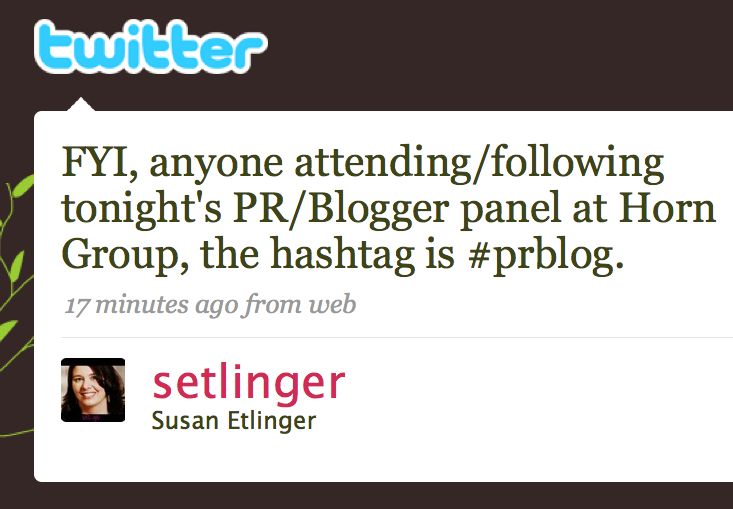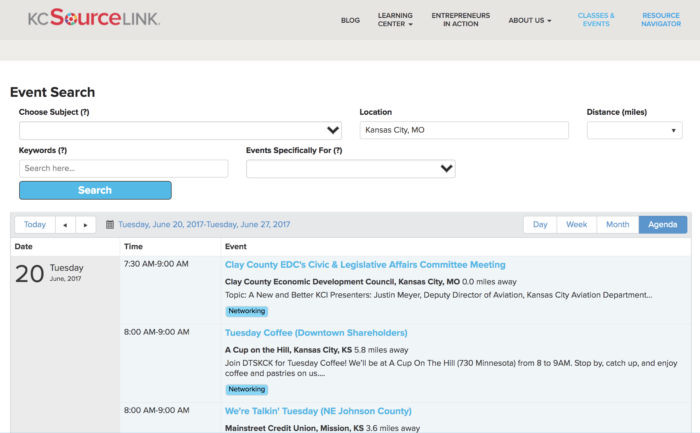Today’s marketing tactics focus on how you can provide value to your potential customers. This can be done through informative content via your blog, entertaining memes posted on social media, or contest giveaways. One of the best ways to provide value is through event marketing. We’ll go through the definition of event marketing, some different types of event marketing, and ways you can promote your event. Plus, stay tuned for some BONUS TIPS at the end!
What is Event Marketing?
Event marketing: the process of developing a themed exhibit, display or presentation to promote a product, service, cause or organization by leveraging in-person engagement.
These events can occur anywhere—online, offline, in your office, at a conference, etc. You can sponsor/co-host an event (such as our recent Google Partners Connect event) or center your event around networking if you’re a B2B company (such as our Midwest Business Spotlight). Making real connections with people as opposed to email newsletters that the recipient can’t put a face to gives your company legitimacy and memorability.
Utilizing Social Media
A great benefit to event marketing is that it builds brand awareness. It also generates leads by bringing in the right target demographic. If they’re showing up to your event, they’re already interested in what you do! Besides hosting or participating in an event, you should also share your participation on social media. Tag those who attended the event. Get people pumped for your event by giving it a hashtag and using it on social media posts leading up to the date. Create lists of potential attendees on Twitter. Start a Facebook group to make it easy for you to keep track of attendees and share messages relating to your event. Facebook will even send out reminders of the event to the people who RSVP, so you don’t have to worry about it. Social media is a great tool to utilize when planning your event. Google+ has an ‘events’ feature that allows you to send out customized invitations and sync with Google Calendar once a recipient commits to your event (you can also utilize Google Hangouts). With LinkedIn, you can promote your registration page and use the group feature to get people involved. Finally, Foursquare works great for events with physical locations.
Calendars, PR, and Email
Other surefire ways to bring in attendees is to post your event on local calendars, utilize PR, and send out an email promotion. For marketing agencies in Kansas City, that might be Eventbrite or KC Source Link. This is also where public relations comes in—consider publishing a press release about your event and getting the word out via a local radio station. An announcement about your event from the city newspaper carries more legitimacy and reaches more people than an announcement coming from your own account. This makes it seem like your event has been verified by a reputable source. Begin your email promotion a month out from your event, and send out several promotional emails spaced out once a week. These emails should be visually appealing (show people why your event is worth their time) and give a clear who, what, when, where, why.
Reoccurring Customers
You get more ROI out of a one-time customer than someone who’s going to frequent your location multiple times. Try to retain and grow your existing customers by offering ‘members only’ events, or contests that build the likelihood of winning with additional purchases (ie: McDonald’s’ Monopoly sales promotion).
Informational Events
A motivating factor for someone to attend your event is knowledge. If they’re going to get information out of it, that’s reason enough for them to attend. A great way to establish your authority on a topic is for your company leaders to speak at other events as a guest speaker. Other ways are to have influencers in your market endorse your product/service or to publish a blog that’s regularly updated with useful, accurate information.
Online Events
A huge trend right now is online events—live streams that feature experts on certain topics or webinars. This option is less expensive and allows for attendees to get involved from the comfort of their desk. You can also reach people from all across the country since there isn’t a physical location you’re having your event at. Webinars are made up of presentations, discussions or workshops taught over the internet. By giving attendees the option to watch at their leisure, you increase your viewership. However, you also miss out on real-time tweeting and engagement opportunities. Webinars typically last between 30 and 60 minutes, and allow attendees to ask questions directly to presenters. Virtual events are another option. These let participants engage with a virtual environment that incorporates education, networking, and interactive features. At this virtual booth, they can meet the staff, ask questions, and get swag. A third option for online events is live streaming events which, as the name implies, is a live event that you can stream to viewers. Using a webcam or full production crew, you can broadcast your event anywhere. Applications like Livestream, Google Hangouts and Ustream have a live service that lets you stream, record and encourage audience participation with chat and social media functionality.
In-Person Events
For in-person events, you can choose between conferences, tradeshows, seminars, and meal gatherings. Tradeshows center around a particular industry or profession, bringing together numerous companies in a specific market. These are especially popular with tech industries. Businesses can either participate or sponsor a tradeshows. These types of events allow you to show off a product and network. Conferences are a little different because the whole goal is to deliver information (ie: user summit). Typically, they are larger, company-specific marketing events that train or educate. Seminars are smaller and can include roadshows and field events. Much like a classroom, seminars are run by a teacher/expert and have a more formal tone. Breakfasts, lunches and dinners are another form of in-person events. These targeted events can draw in potential customers or serve as a reward for pre-existing customers. Smaller meal events (8-10 people) are geared more toward networking, while larger ones may incorporate presentations as part of the event.
Consistent Themes
No matter what type of event marketing you choose to go with, a consistent theme is necessary. You can show your theme through your booth presentation, collateral, and contest types. For example, maybe your brand chooses to do giveaways that require sharing funny memes with a specific hashtag. Consider booth staffing outfits and promotional materials, and try to make yourself stand out with games, free stuff or interactive tools.
Think Outside the Box
To make your event seem less like a sales pitch, you can partner with charities, offer discounts, and give free samples of your products. A BBQ business, for example, might advertise their event in the parking lot outside a baseball game to appeal to tailgating fans. In fact, you can even offer samples of your product in grocery stores. Stores like Google Fiber allow customers to try out their VR goggles in the store before making a purchase. These types of demonstrations are a perfect example of how you can hook your audience with a taste of the product.
The Follow-Up
Now, let’s say you’ve just finished up a successful event. Your job’s over, right? NO. From here, you need to follow-up with your attendees and those who didn’t attend your event. A follow-up campaign needs to include a lead list that’s compiled right after the event (a simple collection of business cards should do the trick), an email follow-up with an event synopsis (session descriptions and blog posts), and consistent contact with the potential customer after contact has been made.
BONUS TIPS:
- Curate relevant content before the event (ie: for event about marketing to millennials, share articles and create blog posts about the millennial mindset and generational stats).
- Include a speaker page (if relevant) with photos of the speaker and a quick bio listing their credentials.
- Have a very clear ‘register now’ button on your website.
- Include a video thumbnail in your emails to improve click through rates.
- Include testimonials on the event page and on social media if this is an event you’ve thrown in the past.
- Change the links in your social media bios to go directly to the event page.
- Seek out relevant people on Twitter and mention them in tweets about your event.
- Incorporate a registration thank you page which lets attendees share the event on social media. This can be done with a Click-to-Tweet link that will announce the attendee’s participation in the event, include the event hashtag and provide a link to the event sign up page.
Contact Us
If you want to get the word out about your event, contact us. We specialize in internet marketing and mobile marketing, as well as social media for those interested in sharing through their social accounts. You can even utilize our SEO services to make your event pop up when people are searching for events in their area.







